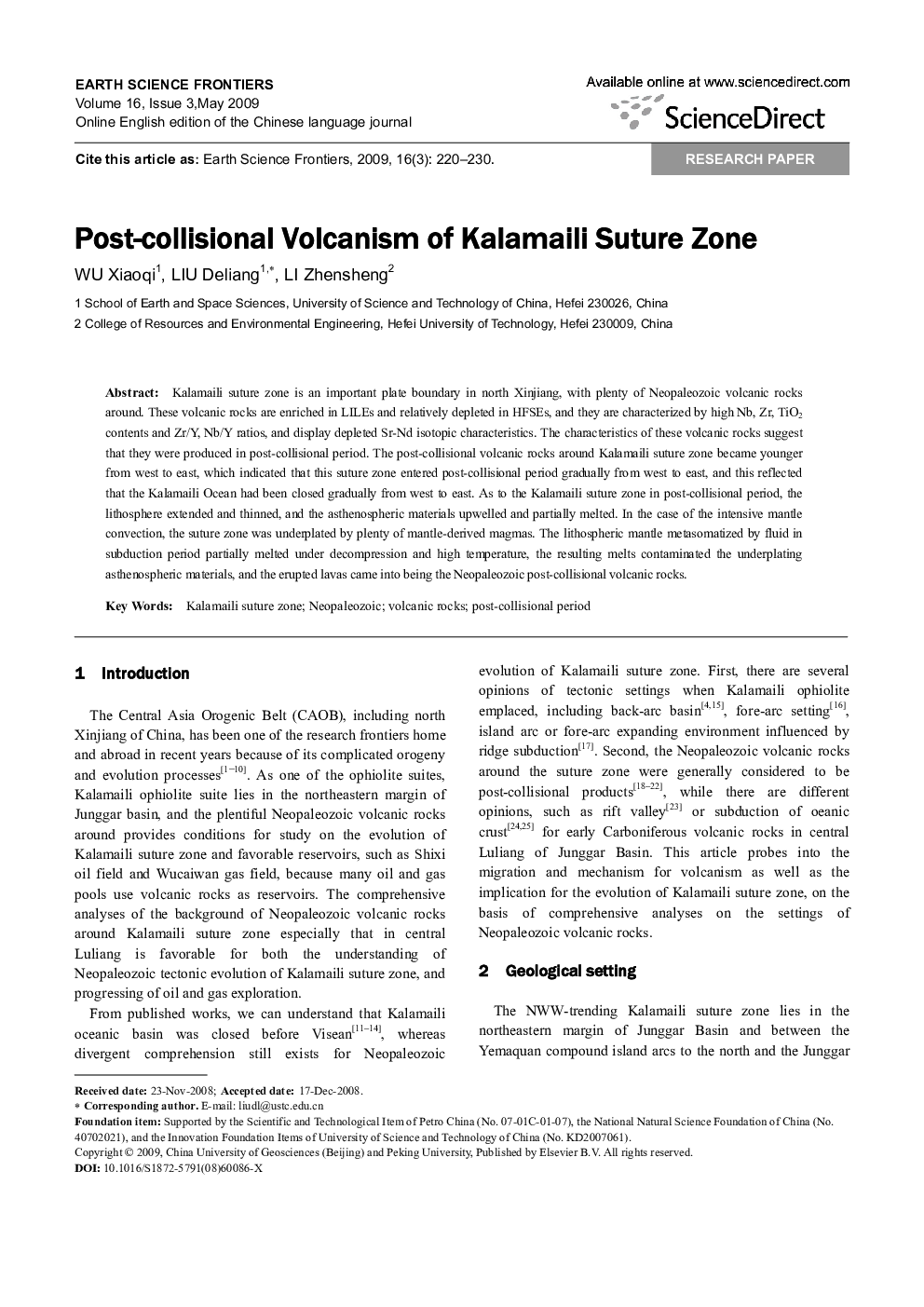| Article ID | Journal | Published Year | Pages | File Type |
|---|---|---|---|---|
| 4701517 | Earth Science Frontiers | 2009 | 11 Pages |
Kalamaili suture zone is an important plate boundary in north Xinjiang, with plenty of Neopaleozoic volcanic rocks around. These volcanic rocks are enriched in LILEs and relatively depleted in HFSEs, and they are characterized by high Nb, Zr, TiO2 contents and Zr/Y, Nb/Y ratios, and display depleted Sr-Nd isotopic characteristics. The characteristics of these volcanic rocks suggest that they were produced in post-collisional period. The post-collisional volcanic rocks around Kalamaili suture zone became younger from west to east, which indicated that this suture zone entered post-collisional period gradually from west to east, and this reflected that the Kalamaili Ocean had been closed gradually from west to east. As to the Kalamaili suture zone in post-collisional period, the lithosphere extended and thinned, and the asthenospheric materials upwelled and partially melted. In the case of the intensive mantle convection, the suture zone was underplated by plenty of mantle-derived magmas. The lithospheric mantle metasomatized by fluid in subduction period partially melted under decompression and high temperature, the resulting melts contaminated the underplating asthenospheric materials, and the erupted lavas came into being the Neopaleozoic post-collisional volcanic rocks.
